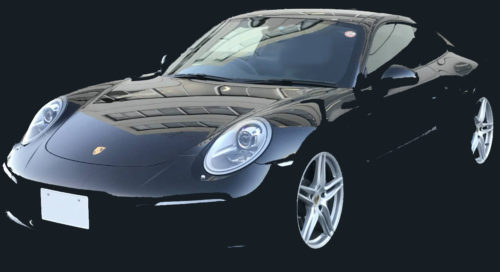Ask German Porsche Technique Master Marcus: Part 1
It's been a little over five years since I first encountered a Porsche 911 as my favorite car?
At first I didn't know anything about Porsche ... rather, I like cars and have been driving since I was 16 years old (because I was overseas, so I can drive from 16 years old), but I don't know anything about Porsche as a whole. I didn't know
I've learned a lot in my own way over the past five years, but I'm still worried about my learning being slow and strange things (laughs), and I'm not learning properly at all. there is a bias
Regarding Porsche, I am still in the middle of such an eternal learning, but the other day I had the opportunity to talk with Mr. Marcus, a German Porsche Technique Master who had come all the way from Germany at the event of Porsche Studio Nihonbashi. rice field.
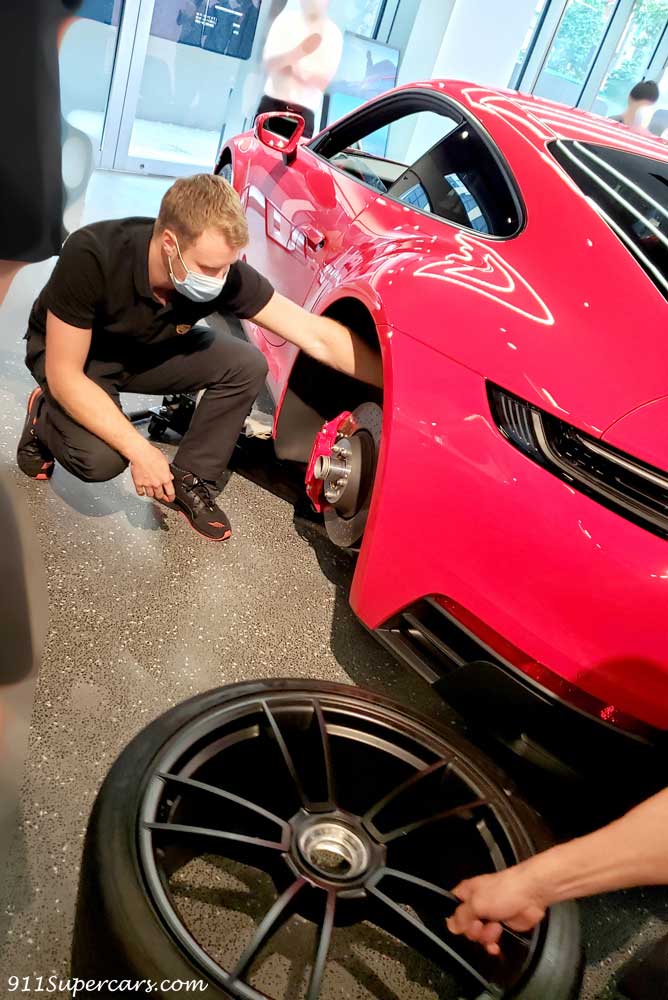
During the limited time at that time, I asked two questions that came to my mind, so I would like to write down the questions and answers at that time.
You may think, "I didn't even know that...", but for me, it was a convincing event.
Well, again, it's a small detail, but it's something I've been wondering about for a long time ^^
★Postscript (2022.9.3)★
I think you can understand it if you look at the comment section, but I have learned a lot and the conclusion has changed a little, so I would like to write it here first. The story after this
・ The story of when the shift operation was performed during coasting
I think that's what it means. In sports mode where coasting is not performed, the shift was changed from the first paddle operation.
Also, the purpose of downshifting with the paddles that I am talking about here is not for acceleration, but for deceleration.
Porsche 911 paddle shift does not respond immediately when downshifting
At this time, the first question I asked Mr. Marcus was about the paddle shift operation of the Porsche 911 (991.2).
My black Carrera is a PDK, and most of the time I usually drive with the PDK, and when I dare to shift down during that time, I use the paddle shift to downshift. .
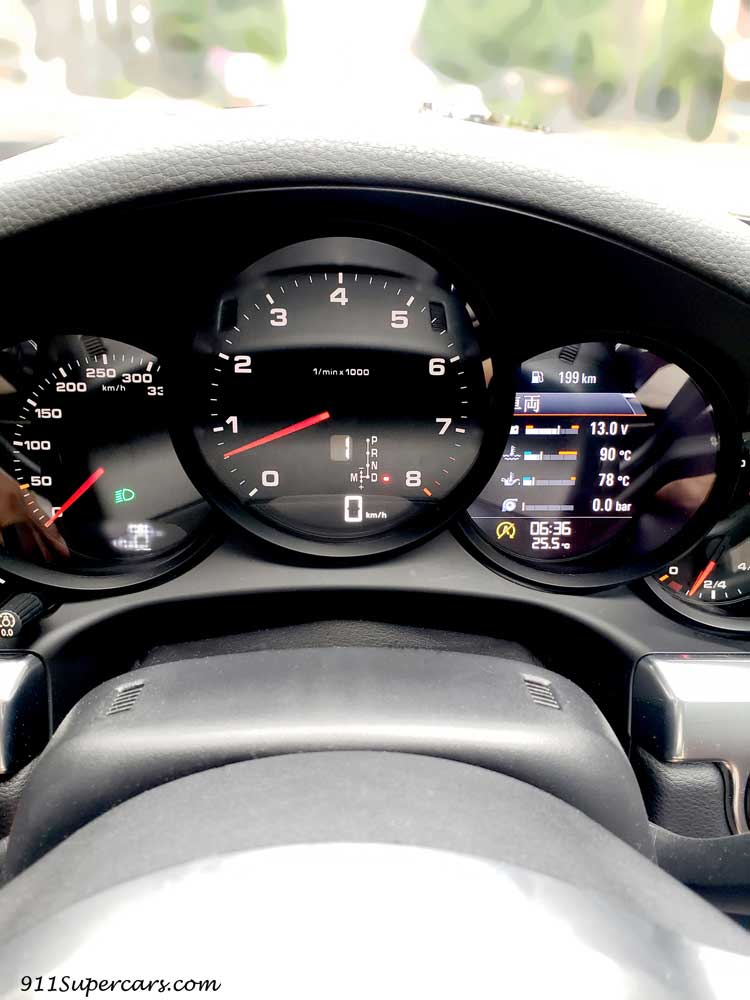
By the way, in the case of the late 991 model (991.2) of the Porsche 911, the shift stick part of the PDK is usually straight like this ↓

When the shift is in this straight state, it is in so-called automatic mode, and the red light is lit at the drive "D" mark at the bottom center of the instrument.↓
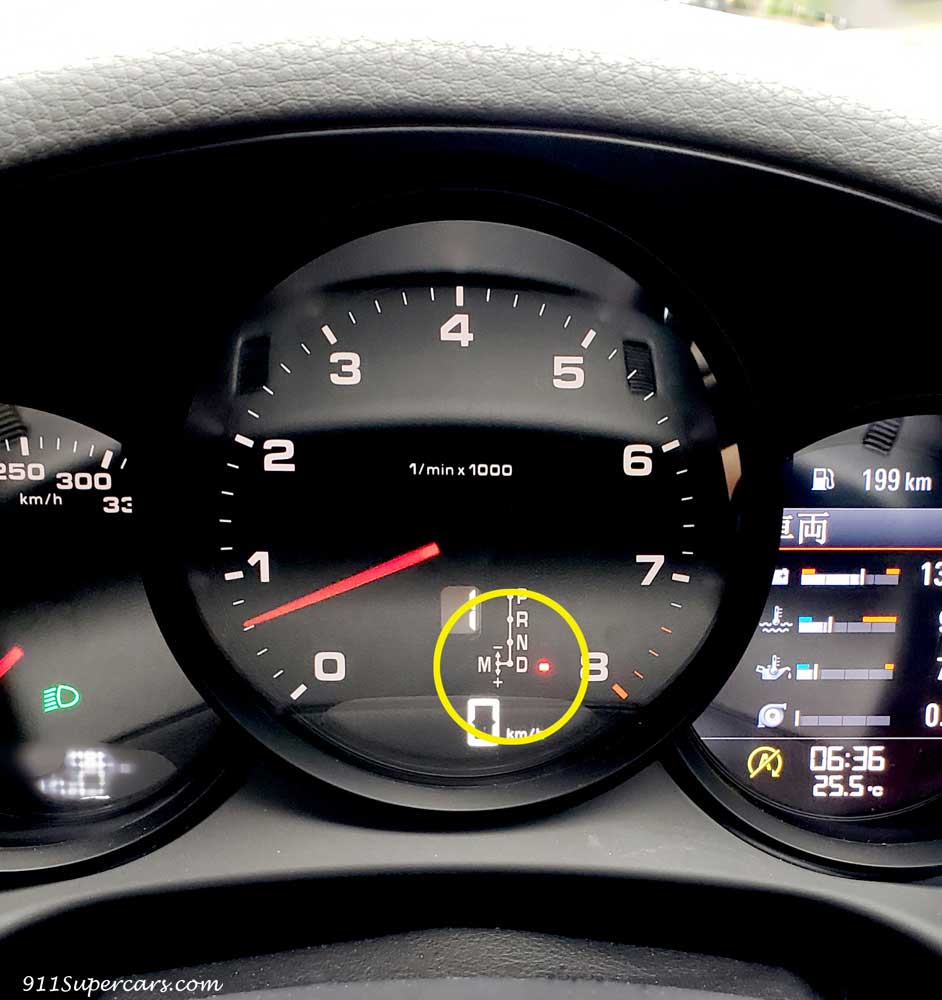
If you physically tilt this shift to the left side, it will switch to "manual mode" and you will be able to drive by manually changing the shift with the up and down operation of the stick or paddle shift ↓

Push the shifter to the left to enter manual mode...
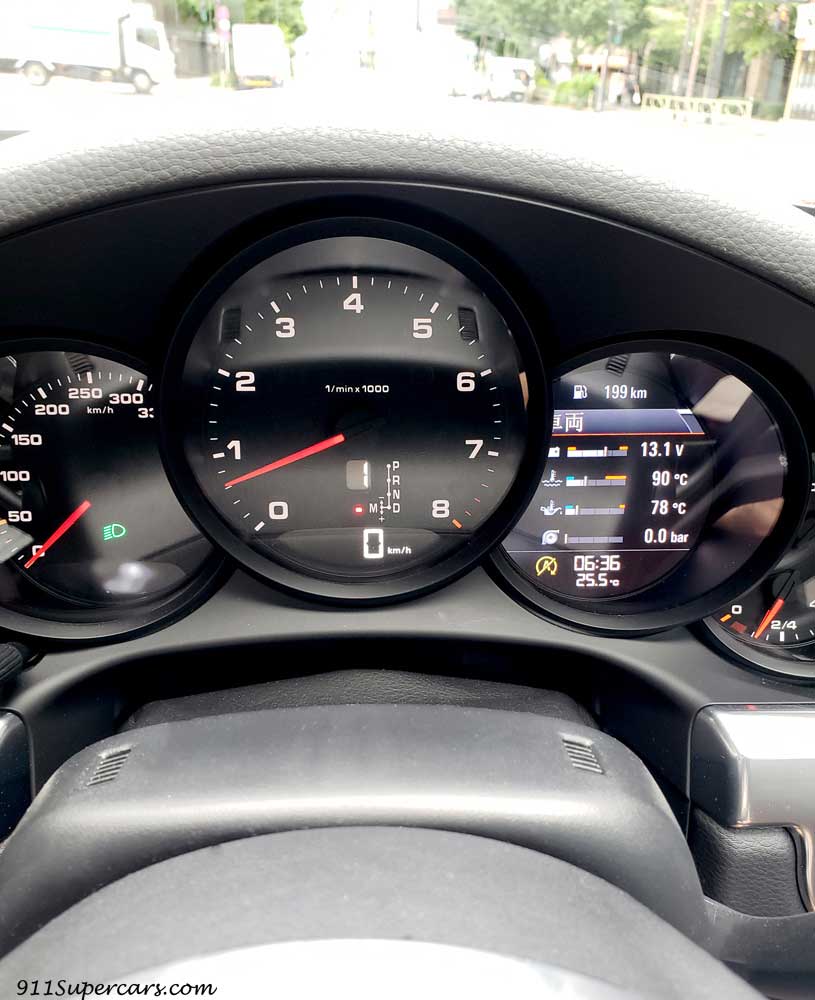
A red light will be lit next to "M (manual)" to the left of "D" on the instrument, indicating that the current car is in manual mode.
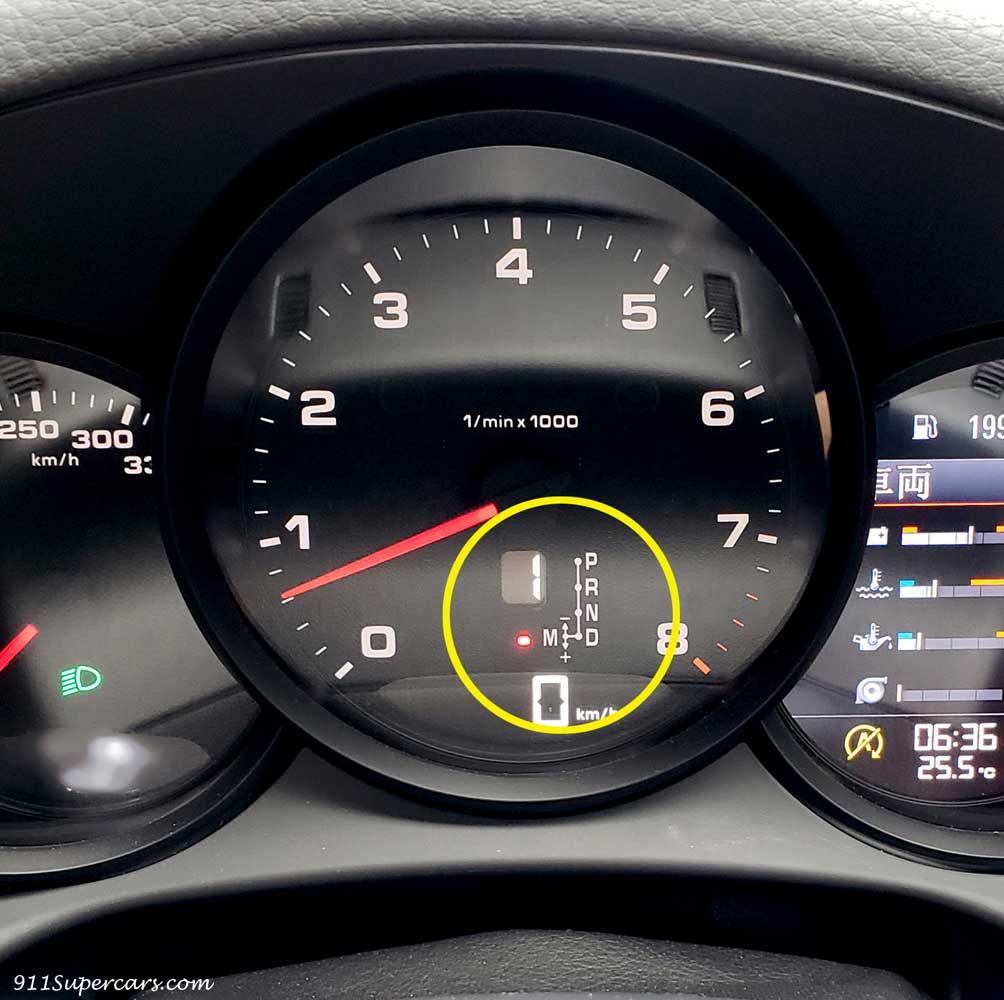
It is possible to manually switch to manual mode like this, but in my case it is not the case. Basically, I want to shift down in normal PDK mode without knocking down this shift and switching to manual mode. It means that you are downshifting with the paddles only when.
When driving in Tokyo, I often downshift while driving on highways, but there was always something I was worried about.

That is, "Even if you shift down once with the paddle while driving, it will not shift down the first time."
My 991.2 Carrera is a PDK up to 7th speed, but even if I push (pull) the paddle with a "click" when driving in 7th speed, it stays in 7th speed. Then, if you click once more, it shifts down to 6th gear.
After that, each "tick" and "tick" will shift down one speed at a time.
However, I suddenly noticed that the shift did not change with the first "click".
Uuuuuuuuu. Are there any rules for this? Why does it sometimes downshift on the first shift and sometimes not?
If you don't always do one or the other, when you want to shift down suddenly, you'll be lost whether "one time" or "two times" is fine. I really hate this momentary confusion.
So I asked Marcus about this. "Is there some kind of rule to shift down or not, or is there some kind of specification?"

1st paddle operation is manual mode activation
And his answer was... "Well, that's probably because I switched to manual mode the first time."
e? ? ?
He continued, "If you put it in manual mode, there will be a light next to the M mark, won't it? When you click once with the paddle, won't that light come on?"
yeah yeah I never thought of that!
At that time, I couldn't check it on the spot, so I thought, "Really? Wasn't the light on the side of the M only when you switched to manual mode? The first time you touched the shift with the paddle, that is, manual mode Is it the activation (start) of ???”, and it became “I will check it next time !!”.
I couldn't help but worry about it, so of course I checked it immediately ^ ^
So, the result.
While driving in the normal PDK mode instead of the manual mode, if you click down once with the paddle shift ... ah ah ah.
arrived!
It was true. At the first "click", a red lamp lights next to "D" and next to "M".
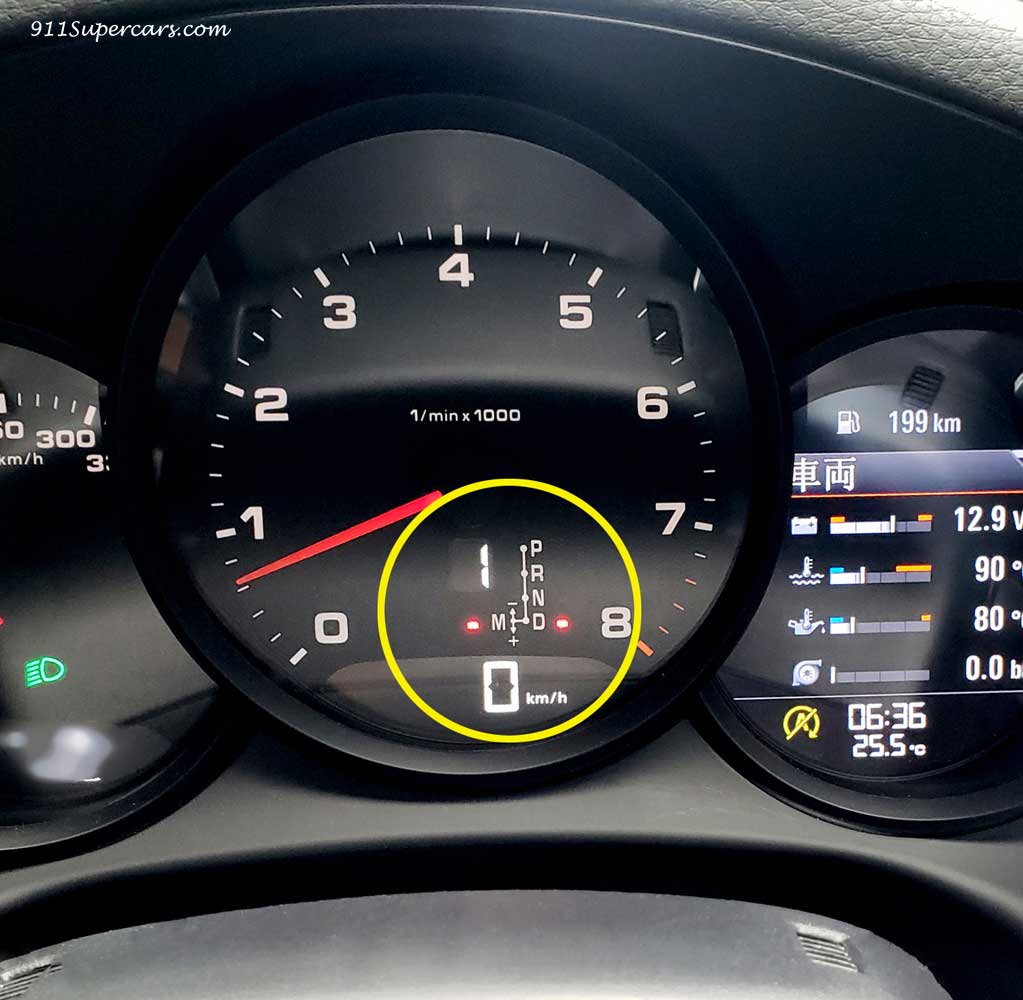
This first paddle operation was the activation signal to "start manual mode".
I see! ! ! I totally agree.
keyword after 6 seconds
Next, "Why is there a time to shift down immediately at the first time and a time to activate at the beginning?" This time I read the manual and confirmed it myself.
Then there were rules for this too. Here are the conditions when manual mode continues and when it is released:
Conditions when manual shift mode is maintained
- In overrun mode
- When the vehicle stops at an intersection, etc.
- When the vehicle's shift logic shifts down two or more gears
And
Conditions for canceling manual shift mode
- automatically after 6 seconds
Yes, the answer was very simple: after 6 seconds of no shift operation, it would start again with activation.
That's right ~! !!
* Of course, even if 6 seconds have passed, the MT mode will be maintained if the "Conditions to be maintained" are met. And when I actually operated it, it was almost never released in 6 seconds, and it felt like it was released in about 10 seconds at the earliest.
Also confirmed with Porsche 911 (992)
I would like to see what is going on with the Porsche 911 Carrera 992.1 type.
This is the normal PDK mode state without doing anything ↓
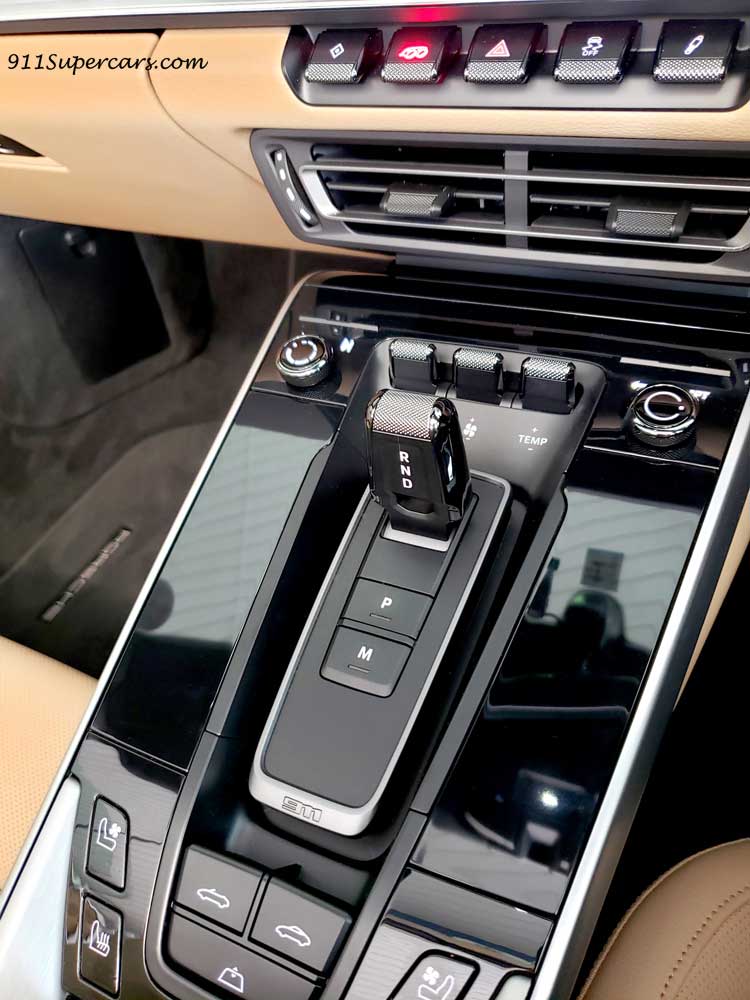
In the 992 type, when changing to manual mode, do not touch the shift and press the "M" at the bottom of this shift to change to manual mode ↓

If the red light under M lights up, it means you are in manual mode.

*The following photos were taken by the person in the passenger seat because I wanted to take a picture of the shift down while driving.
When the manual mode button is pressed, an arrow mark is displayed between N and D, and "M" is lit on the left side.
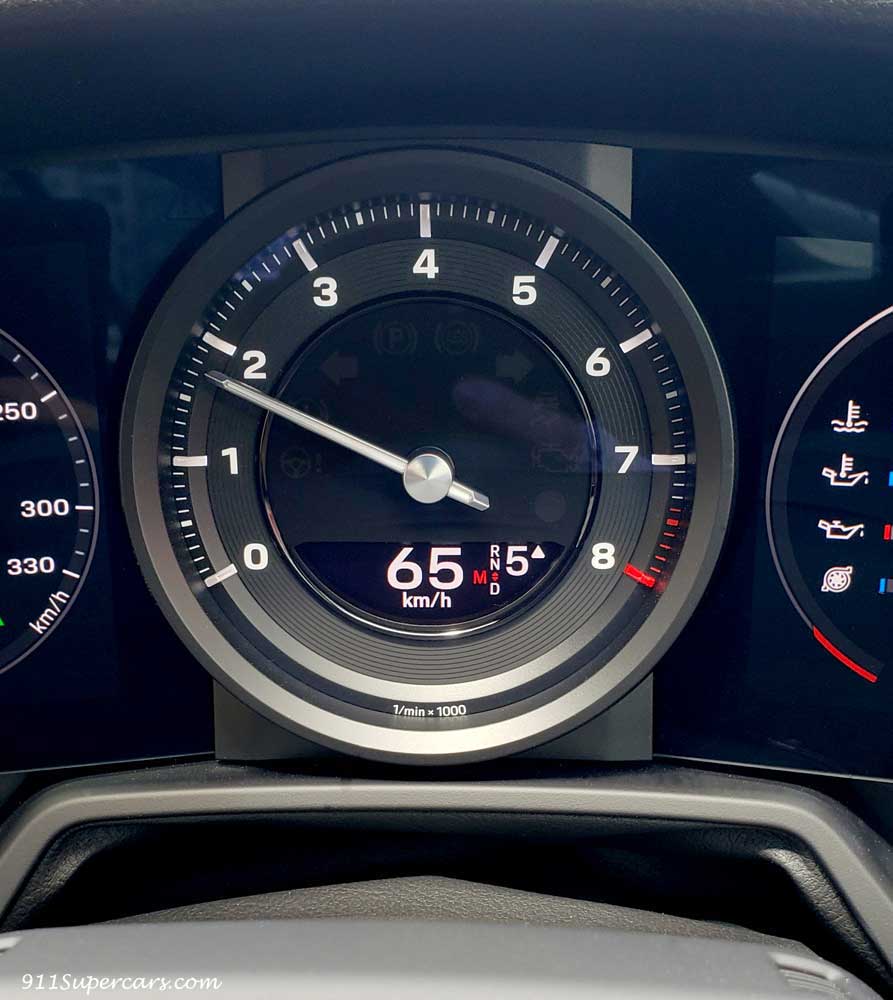
It looks like this when expanded. An arrow (triangle) also appears next to the 5th gear display.

And here is the display when the shift operation is performed in normal PDK mode, not in manual mode.
It's a small detail, but do you know the difference?
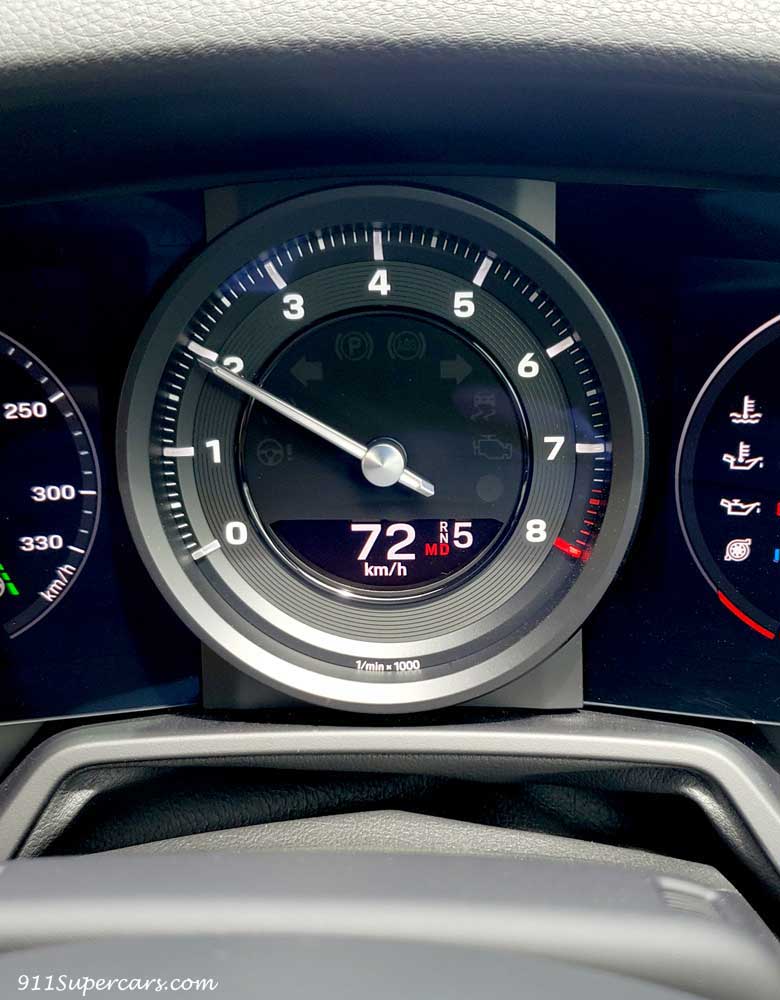
The white arrow (triangle) is no longer displayed on the right side of the 5th speed display, and the up and down arrow marks are not displayed between N and D. This is the display of "You are shifting in PDK mode".
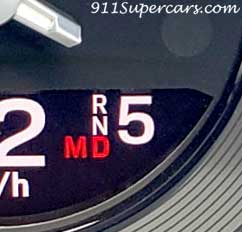
According to the manual, the conditions when manual mode was maintained and released were the same as 991.2.
Shift down from the first shift operation in 992.1
However, the biggest difference was that the 992.1 type was not "activation for the first paddle shift operation in PDK mode".
In other words, from 992, the shift is changed from the first paddle operation.
This, at the time of 991.2, there was a person who gave me the opinion that "It's quite troublesome if you don't shift down from the beginning!" I was pleased with the evolution of 992 ^ ^
However, in my case, I am already accustomed to 991.2 with "MT mode activation (= not shift change) for the first time", so even when I paddle with 992, did I change the shift properly for the first time? I can see it with my eyes (laughs).
★Postscript (2022.9.3)★
As I wrote in the first postscript, it seems that the first paddle operation during PDK is not a shift change but an activation (connecting the clutch), which is only during coasting. .
The 991.2 has an automatic coasting function, but from the 992.1, it had to be manually operated to make this coasting.
Therefore, if you do not do anything yourself, the 992 is always in a "non-coasting state", so there is no need to activate the paddle operation, and it seems that the shift was changed from the first operation.
Thank you all for your comments! !
I wrote it for a long time, but it was a fairly clear story in my mind, so I wrote it.
Ha~ Refreshing. Thank you very much, Marcus! !
I have asked you one more question, so I will write it next time (this is a really irrelevant story (laughs)).
Related article:I participated in the event of Porsche Studio Nihonbashi

